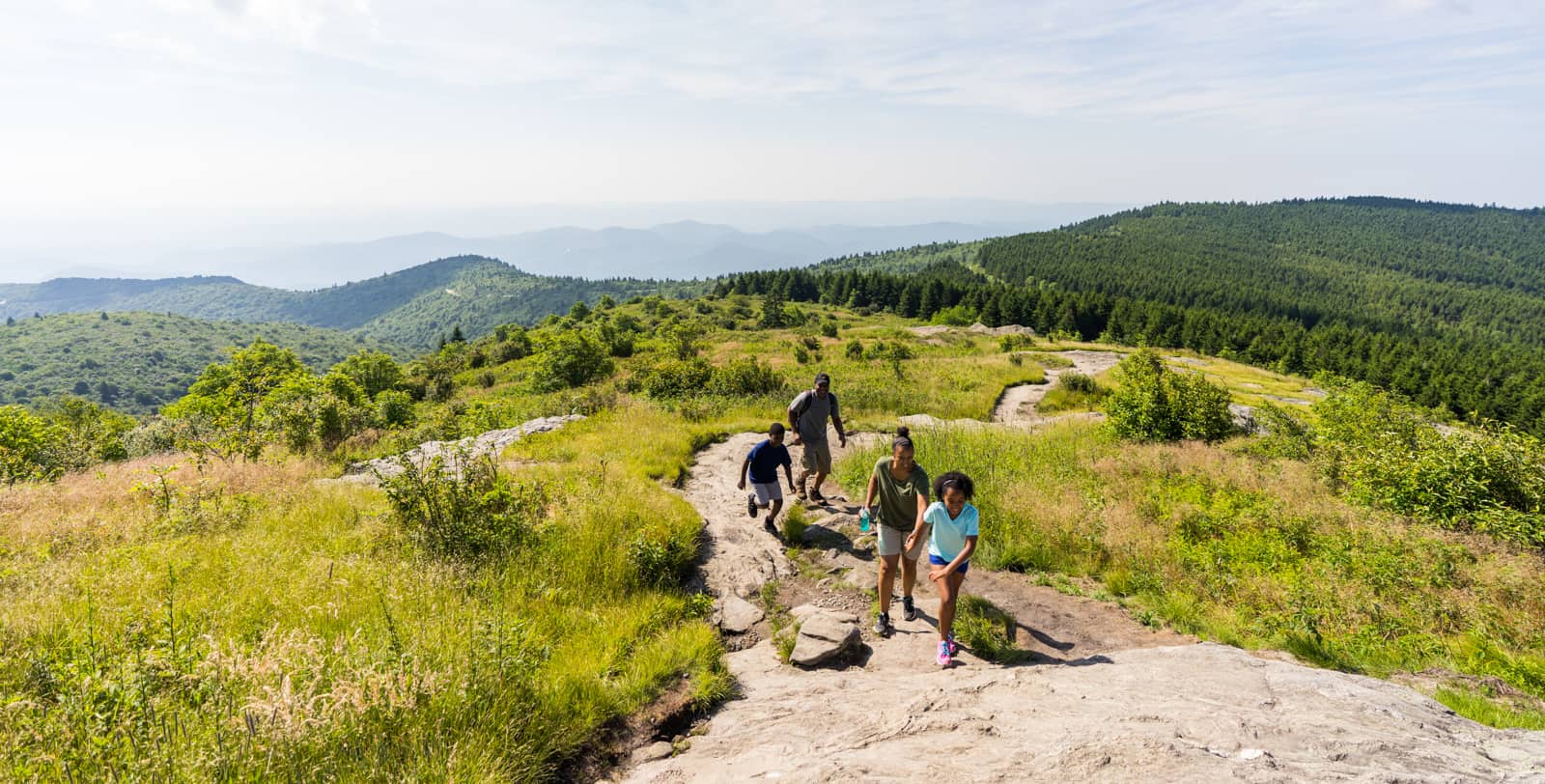The Smokies and hiking go together like peas and carrots. When you head here, you know there’s an adventure waiting just outside your door. Take a moment to refresh your hiking safety knowledge before your next trek through the Smoky Mountains! While you might not encounter any challenges on your scenic hike, we’ll feel better knowing you’re as prepared as you are excited.
Are you up for it?
We know, it seems like a silly question. Still, it’s important to do your research before heading out to a trailhead to make sure you can handle it—distances in the mountains after often longer than they appear! We don’t want you to become exhausted before soaking in the spoils of your trek: a magnificent Smoky Mountain view like this one:
Make a plan
Let’s get down to brass tax. If you’ve found a trail your group is ready to tackle, it’s time to come up with a plan. Jot down where you’re heading, how long you’ll be there, and who will be joining your party. Walk through these detailed plans with someone who won’t be coming along on your hike. Most importantly, stick to the plan!
Get to packing
When it comes to packing for your hike, you should bring these eleven essential items on your trip, just in case:
- Map and compass. Don’t rely on your cell phone just in case you lose battery or service.
- Extra layers. Temperatures can shift around here, so be prepared for both the hot and the cold.
- Flashlight. And batteries. Don’t forget the batteries.
- Sun protection. This includes sunscreen, sunglasses, hats, and long-sleeved clothing.
- Proper footwear. You wouldn’t run a marathon in flip-flops, would you? (If you answered “yes,” we strongly advise you to not wear them on a trail.)
- First aid kit. You’d rather have one and not need it than the other way around.
- Water. A long hike under a bright sun can lead to dehydration. Even in cooler weather, inclines may result in added thirst. Your hike will not be fun if you’re dehydrated. More importantly, we want you to be safe!
- Food. To keep your energy levels up, pack some nutritious, no-cook items like granola bars, nuts, and dried fruit.
- Knife. See the explanation for item #6 above. Also, please don’t bring Rambo’s Bowie knife.
- Backpack. To conveniently store items 1 – 9.
- Safety Whistle. The sound of a whistle carries much farther than your voice ever could, making it even more effective if you need to signal for help. Stop by our Visitor Center to pick one up for free!
Check ahead—again
It’s not redundant, it’s smart! Check local weather forecasts before heading out and consult the plans you put together earlier to see if they need to be adjusted at all. Check local park alerts, too, for any trail updates. It might also be a good idea to give yourself some time to acclimate if you aren’t used to our higher altitude.
Slow and steady sets the pace
So, you’re prepped and ready to hit the trails. A good rule of thumb is to always let your slowest hiker set the pace. This way, you’re reducing the chance of injury, and if something does happen, everyone is right there to help quickly. Never leave a hiker behind!
Track your travel
It’s always a good idea to keep track of the time and distance you’re hiking. You don’t want to get stuck outside in the dark, so make sure you set a turnaround time and stick to it. Remember that it takes about twice as long to travel uphill than downhill.
Yield to climbers
Now for some trail etiquette. If you’re moving downhill, please carefully step to the side to let those climbing uphill pass. Don’t forget to follow the unofficial Hiker’s Code and give each other a respectful head nod or a hearty “howdy” as you pass.
Pump the breaks
Pay close attention to how you’re feeling on your hike and take breaks accordingly. Keep your hydration and energy levels up by indulging in your water and snacks. Tip: if you can talk while you’re walking, you’re moving at the perfect speed.
One step at a time
Even the most-traveled trails can present some treacherous obstacles, like fallen limbs. To avoid tumbling over them, always watch your step. Avoid anything that might look slippery or wet, too.
Respect the wilderness
You might just be stopping by, but the Smokies are home to many of our favorite species. Please respect the wildlife here and give our friends at least 150 feet of space if you happen to encounter them.
Leave no trace
As part two of “respect the wilderness,” please look after our neighbors’ homes and take all your trash with you when you leave. Always stay on the trails. Don’t take home any plants or natural items.

Now that we’ve covered the basics of safe hiking, you’re all set to have an incredible quest through some of the best hiking trails in the Smoky Mountains. For even more guidance on safe hiking or recommendations on which trails to explore, swing by our Visitors Center in Maggie Valley, NC. We’re happy to help!





